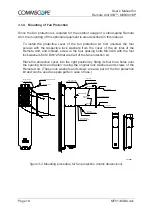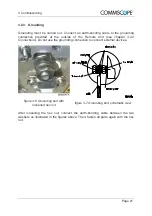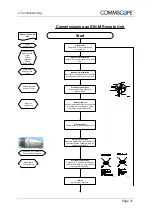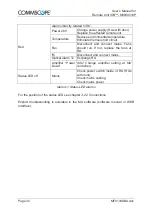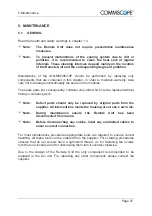
3 Commissioning
Page 23
3.3.
CONNECTION OF THE ANTENNA CABLES
The Remote Unit has N-type antenna connectors. For its location please refer to
chapter
. For mounting the cable connectors, it is recommended to
refer to the corresponding documentation of the connector manufacturer. The
bending radius of the antenna cables must remain within the given specifications.
For the selection of cable and antenna it should be considered that, on the one hand,
a cable with higher loss is less expensive but, on the other hand, it impairs
performance.
Use an appropriate torque wrench for the coupling torque of N-type
connectors (2 N-m / 20 in lb), with 13/16 in opening to tighten the N-type
antenna connectors. For example, use torque wrench of item no. 244379
available from the Andrew e-catalog. Do NOT use your hands or any
other tool (e.g. a pair of pliers)! This might cause damage to the
connector and lead to a malfunction of the Remote Unit.
To minimize passive inter-modulation (PIM) distortion, attention has to
be paid to the physical condition of the connector junctions. Do not use
connectors that show signs of corrosion on the metal surface. Prevent
the ingress of water into the connector. Attach and torque the
connectors properly.
3.4.
OPTICAL-FIBER-CABLE CONNECTION - RULES
Main optical system parameters:
Fiber:
Single mode fiber, type is E9/125 µm
Attenuation: <0.36 dB / km @ 1310 nm / <0.26 dB / km @ 1550 nm
Dispersion: <3.5 ps / nm km @ 1310 nm / <18.0 ps / nm km @ 1550 nm
Fibre-cable connectors E2000APC8°
ION-M system:
The specified bending radius ( < 4 cm) of the optical fibers must not be
exceeded.
The pigtails for the connection between Master Unit and Remote Unit must
have a sufficient length. A protection for the feeding into units must be given.
The system attenuation of the optical fibers, including the connectors, must
not exceed 10 dB.










